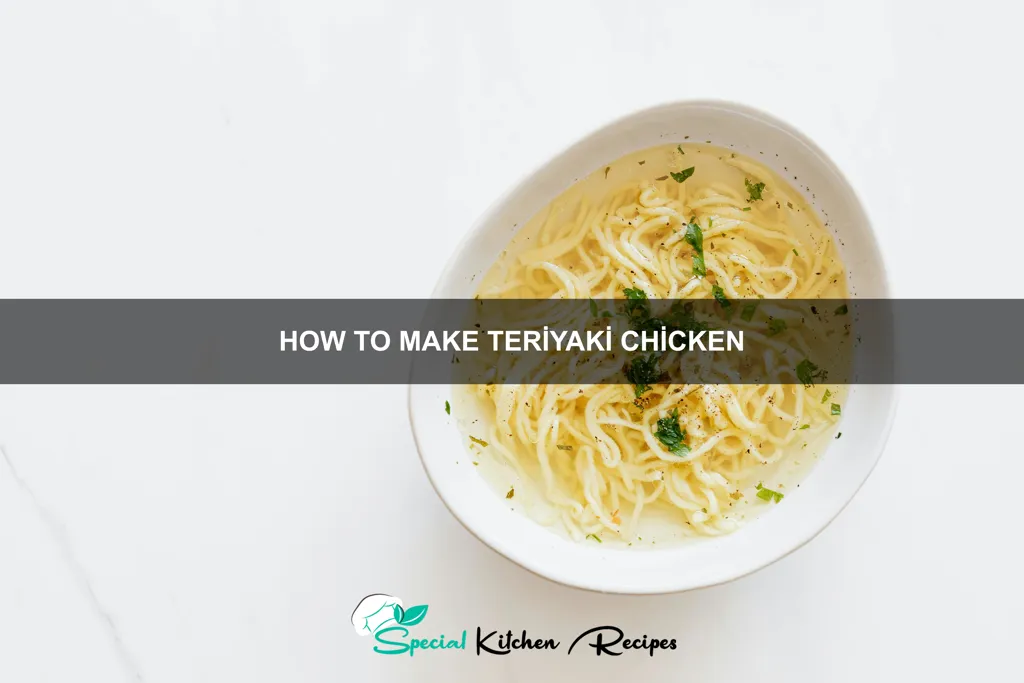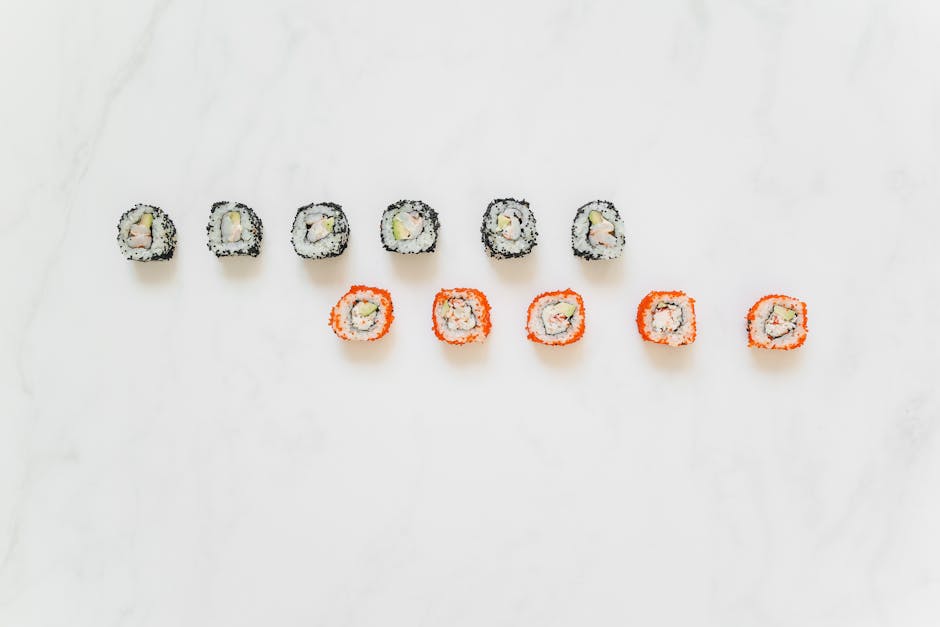Prepare to embark on a culinary journey to Japan with this guide on how to make teriyaki chicken! This beloved dish, a cornerstone of Japanese cuisine, boasts a rich history and a global following. While the exact origins are debated, teriyaki’s roots can be traced back centuries, possibly even to the Edo period (1603-1868). Early forms involved grilling fish or meat with a simple soy sauce-based glaze, a technique that evolved over time. The name itself, teri-yaki, combines teri (glossy shine from the glaze) and yaki (grilled or broiled), perfectly describing the dish’s characteristic appearance and preparation method.
Initially, teriyaki was a luxury item, enjoyed mainly by the upper classes. The process of preparing the marinade, involving carefully balanced soy sauce, mirin (sweet rice wine), and sake, required skill and high-quality ingredients. However, as Japan’s economy grew and ingredients became more accessible, teriyaki’s popularity soared. By the mid-20th century, it had transitioned into a staple of Japanese home cooking and a widely recognized culinary symbol of Japan. Its widespread adoption is evidenced by its inclusion in countless Japanese restaurants worldwide, with estimates suggesting teriyaki chicken dishes account for a significant percentage of menu sales in many establishments.
The cultural significance of teriyaki extends beyond its delicious taste. It embodies the Japanese emphasis on balance and harmony—the sweet and savory flavors of the glaze, the careful preparation, and the presentation of the dish all reflect a deep appreciation for culinary artistry. Teriyaki chicken’s global popularity speaks to its adaptability; it’s been integrated into various international cuisines, demonstrating its ability to transcend cultural boundaries. Interestingly, while the basic ingredients remain consistent, variations in the recipe exist, reflecting regional differences and personal preferences, adding to its enduring appeal. Whether you’re a seasoned cook or a culinary novice, mastering teriyaki chicken opens the door to a flavorful exploration of Japanese culinary heritage.
Ingredients and Measurements
This recipe yields approximately 4 servings of delicious teriyaki chicken. Accurate measurements are crucial for achieving the perfect balance of sweet and savory flavors. Using a kitchen scale is highly recommended for precise ingredient weighing, especially for the sugar and soy sauce.
Chicken: 1.5 lbs boneless, skinless chicken thighs, cut into 1-inch cubes. Chicken thighs are preferred for their juiciness and flavor, but boneless, skinless chicken breasts can be substituted. Ensure the chicken is cut into uniform pieces to ensure even cooking.
Teriyaki Sauce: The heart of this dish! This recipe uses readily available ingredients to create a flavorful and balanced sauce.
Soy Sauce: 1/2 cup (120ml) of high-quality soy sauce. Avoid using low-sodium soy sauce unless you prefer a less salty teriyaki sauce. Adjust to your taste preference.
Mirin: 1/4 cup (60ml) of mirin (sweet rice wine). Mirin adds a subtle sweetness and depth of flavor. If unavailable, you can substitute with a mix of 2 tablespoons of dry sherry and 2 tablespoons of sugar.
Sugar: 2 tablespoons (30g) of granulated sugar. Granulated sugar is preferred for its even dissolving properties. You can adjust the amount based on your sweetness preference.
Sake: 2 tablespoons (30ml) of sake (Japanese rice wine). Sake adds a unique umami flavor. If unavailable, you can substitute with dry sherry or white wine.
Ginger: 1 tablespoon (15g) of freshly grated ginger. Freshly grated ginger provides the most intense flavor. If using pre-grated ginger, use slightly less to compensate for its reduced potency.
Garlic: 1 tablespoon (2-3 cloves) of minced garlic. Freshly minced garlic is recommended for the best flavor. Use a fine mince for even distribution throughout the sauce.
Cornstarch (optional): 1 tablespoon (10g) cornstarch mixed with 2 tablespoons of cold water. This creates a slurry to thicken the sauce if desired. Add the slurry towards the end of cooking for a glossy finish.
Sesame Seeds (for garnish): 1 tablespoon, toasted. Toasted sesame seeds add a delightful nutty aroma and visual appeal to the finished dish.
Green Onions (for garnish): 2 stalks, thinly sliced. Fresh green onions provide a vibrant color and a fresh, slightly oniony flavor.
Marinade Preparation
The success of your teriyaki chicken hinges heavily on the marinade. A well-balanced marinade will tenderize the chicken, infuse it with flavor, and create that signature glossy finish. For this recipe, we’ll be making a classic teriyaki marinade, easily adjustable to your taste preferences.
Ingredients:
- 1/2 cup soy sauce (low sodium preferred for healthier option)
- 1/4 cup mirin (sweet rice wine – adds sweetness and depth)
- 1/4 cup sake (optional, adds another layer of complexity – can substitute with extra mirin or chicken broth)
- 2 tablespoons brown sugar (adjust to your preferred level of sweetness)
- 2 tablespoons grated fresh ginger (about 1 inch piece)
- 2 cloves garlic, minced
- 1 tablespoon cornstarch (helps thicken the sauce later)
Instructions:
In a medium-sized bowl, whisk together the soy sauce, mirin, sake (if using), brown sugar, grated ginger, and minced garlic. Ensure all the sugar is fully dissolved; this is crucial for a smooth, even marinade. Whisk vigorously until everything is well combined and there are no undissolved sugar granules.
Once the sugar is dissolved, stir in the cornstarch. The cornstarch acts as a natural thickener, helping to create that signature glossy teriyaki glaze when the chicken is cooked. Again, whisk thoroughly to prevent lumps.
Taste the marinade and adjust seasonings as needed. You might want to add more brown sugar for extra sweetness, more soy sauce for saltiness, or a pinch of black pepper for a subtle spice. This step is key to personalizing the marinade to your liking.
Professional Tip: For an even more flavorful marinade, consider making it ahead of time. Allow the marinade to rest in the refrigerator for at least 30 minutes, or even up to 4 hours. This allows the flavors to meld and deepen, resulting in a more complex and delicious teriyaki chicken.
Important Note: Never marinate chicken at room temperature. Always marinate in the refrigerator to prevent bacterial growth. Ensure the chicken is completely submerged in the marinade for optimal results.
Chicken Preparation
The success of your teriyaki chicken hinges on properly preparing the chicken. We’ll be using about 1.5 lbs (680g) of boneless, skinless chicken thighs, cut into 1-inch (2.5cm) pieces. Chicken thighs are recommended over breasts because they remain juicy and tender even with longer cooking times. Avoid using frozen chicken; ensure your chicken is completely thawed before proceeding.
Begin by rinsing the chicken thoroughly under cold running water. This helps remove any surface bacteria. Pat the chicken pieces completely dry with paper towels. This crucial step ensures even browning and prevents steaming during the cooking process. Excess moisture will hinder the development of a beautiful, caramelized crust.
Once the chicken is dry, it’s time to consider the marinade. While a simple teriyaki sauce works wonderfully, you can enhance the flavor profile significantly by using a marinade. A good marinade will tenderize the chicken and infuse it with extra flavor. A basic marinade might consist of 1/4 cup soy sauce, 2 tablespoons mirin (sweet rice wine), 1 tablespoon sake (rice wine), and 1 tablespoon grated ginger. Adjust quantities according to your preference, and feel free to experiment with other ingredients such as garlic or sesame oil.
Place the dried chicken pieces in a large bowl or resealable plastic bag. Pour the marinade over the chicken, ensuring all pieces are completely coated. For optimal flavor penetration, marinate the chicken in the refrigerator for at least 30 minutes, or preferably for 2-4 hours. If marinating overnight, ensure your chicken is stored properly in an airtight container. The longer the marinade time, the more flavorful your chicken will be.
Before cooking, remove the chicken from the marinade and discard the used marinade. Never reuse marinade that has been in contact with raw chicken. This is a critical food safety precaution to prevent bacterial contamination. Gently shake off any excess marinade from the chicken pieces. You’re now ready to cook your perfectly prepared chicken and transform it into delicious teriyaki chicken!
Cooking the Chicken (e.g., Pan-frying, Grilling, Baking)
This section details three popular methods for cooking your teriyaki chicken: pan-frying, grilling, and baking. Choose the method that best suits your equipment and preferences. Regardless of your chosen method, ensure your chicken is cooked to an internal temperature of 165°F (74°C) to guarantee safety.
Pan-frying: This method yields crispy skin and tender meat. Start with 1.5 lbs of boneless, skinless chicken thighs, cut into 1-inch cubes. Season generously with salt and pepper. Heat 2 tablespoons of vegetable oil in a large skillet over medium-high heat. Once hot, add the chicken in a single layer, avoiding overcrowding. Avoid moving the chicken for about 3-4 minutes to allow a good sear to develop. Then, flip and cook for another 3-4 minutes. Continue cooking, flipping occasionally, until the chicken is cooked through and browned on all sides (about 10-12 minutes total). If the pan becomes too dry, add a tablespoon of oil as needed.
Grilling: Grilling imparts a smoky flavor to the chicken. Prepare your chicken as described above for pan-frying. Preheat your grill to medium-high heat. Oil the grates to prevent sticking. Place the chicken cubes on the grill, ensuring they are not overcrowded. Grill for 3-4 minutes per side, or until cooked through and nicely charred. Keep an eye on the chicken to prevent burning, and adjust the heat as needed. For even cooking, you may need to rotate the chicken halfway through.
Baking: Baking offers a hands-off approach. Preheat your oven to 400°F (200°C). Toss the prepared chicken cubes (1.5 lbs) with 1 tablespoon of olive oil and your favorite seasoning blend. Spread the chicken in a single layer on a baking sheet. Ensure the chicken is not overcrowded to promote even cooking. Bake for 20-25 minutes, or until the chicken is cooked through and reaches an internal temperature of 165°F (74°C). Flip the chicken halfway through for even browning.
Important Note: Cooking times may vary depending on the thickness of your chicken pieces and the heat of your cooking appliance. Always use a meat thermometer to ensure the chicken is cooked to a safe internal temperature. Never undercook chicken.
Once your chicken is cooked, proceed to the next step: adding the teriyaki sauce!
Sauce Preparation (if separate from marinade)
While many teriyaki recipes incorporate the marinade as the final sauce, creating a separate sauce allows for greater control over the final flavor profile and consistency. This approach is particularly useful if you prefer a thicker, glossier sauce or want to adjust the sweetness and saltiness independently of the marinade.
For a classic teriyaki sauce, you’ll need the following ingredients: 1/2 cup soy sauce (low sodium preferred for better flavor control), 1/4 cup mirin (sweet rice wine), 1/4 cup sake (optional, adds depth of flavor), 2 tablespoons brown sugar (packed), 1 tablespoon cornstarch, 1 tablespoon rice vinegar, and 1 teaspoon grated fresh ginger. Adjust these measurements according to your preference and the amount of chicken you’re cooking. For larger batches, simply increase the ingredients proportionally.
Begin by whisking together the soy sauce, mirin, sake (if using), brown sugar, and rice vinegar in a small saucepan. Ensure the sugar is fully dissolved before proceeding; this prevents grainy texture in the final sauce. You can gently heat the mixture over medium-low heat to aid in dissolving the sugar, stirring constantly to prevent burning.
In a separate small bowl, whisk the cornstarch with 2 tablespoons of cold water until a smooth slurry forms. This step is crucial for achieving the desired thickness. Lumps of cornstarch will result in a clumpy sauce.
Once the sugar is dissolved, slowly drizzle the cornstarch slurry into the simmering sauce, whisking continuously to prevent clumping. Continue to simmer over medium-low heat for 2-3 minutes, or until the sauce has thickened to your desired consistency. Stir constantly during this time to prevent sticking and burning. The sauce should coat the back of a spoon smoothly.
Remove the saucepan from the heat and stir in the grated ginger. Taste the sauce and adjust seasoning as needed. You might want to add a touch more soy sauce for saltiness, mirin for sweetness, or rice vinegar for acidity. Allow the sauce to cool slightly before glazing your cooked chicken.
Important Note: If you’re using a non-stick saucepan, you may not need to stir constantly during the simmering process. However, it’s always best to err on the side of caution and stir frequently to ensure even thickening and prevent burning, especially with higher heat.
Combining Chicken and Sauce
Once your chicken is cooked and your teriyaki sauce is prepared, it’s time to bring them together for a flavor explosion! This step is crucial for ensuring your teriyaki chicken is both tender and intensely flavorful. We’ll be focusing on two key methods: coating already cooked chicken, and simmering the chicken in the sauce.
Method 1: Coating Cooked Chicken This method is ideal if you prefer a thicker, less glossy sauce and want to retain the chicken’s texture. Start by ensuring your cooked chicken is completely cool. This prevents the sauce from becoming watery. Cut the chicken into bite-sized pieces or keep it whole, depending on your preference. In a large bowl, add 1 ½ cups of your prepared teriyaki sauce. Gently toss the chicken pieces in the sauce until they are evenly coated. Avoid over-tossing, as this can break the chicken.
Method 2: Simmering in the Sauce This method results in a richer, glossier sauce that clings beautifully to the chicken. It also allows the chicken to absorb more of the teriyaki flavor. Place your cooked chicken (again, ensuring it’s cooled slightly) in a skillet or shallow pan. Pour 1 ½ cups of your teriyaki sauce over the chicken, ensuring all pieces are submerged or at least well coated. Bring the sauce to a gentle simmer over medium-low heat. Avoid high heat, as this can burn the sauce. Simmer for 5-7 minutes, gently turning the chicken occasionally to ensure even cooking and sauce distribution. The sauce should thicken slightly during this process.
Important Considerations:
Sauce Consistency: If your sauce is too thin after simmering, you can thicken it by adding a cornstarch slurry (1 tablespoon cornstarch mixed with 2 tablespoons of cold water). Whisk the slurry into the simmering sauce and continue to cook until thickened. Conversely, if the sauce is too thick, add a tablespoon or two of water or chicken broth to adjust the consistency.
Chicken Temperature: Always ensure your chicken is cooked through to an internal temperature of 165°F (74°C) before combining it with the sauce. Using a meat thermometer is highly recommended for accurate temperature checking.
Storage: Once combined, allow the chicken to cool completely before storing it in an airtight container in the refrigerator for up to 3 days. Reheat gently before serving, avoiding high heat which could dry out the chicken.
By following these steps and paying attention to the details, you’ll create perfectly glazed teriyaki chicken that’s both delicious and visually appealing.
Recommendations
For the best teriyaki chicken, ensure your chicken is fully cooked to an internal temperature of 165°F (74°C). Use a meat thermometer to verify. Overcooking can lead to dry chicken, so keep a close eye on it during the grilling or pan-frying process. Adjust cooking time depending on the thickness of your chicken pieces.
Serving Suggestions: This teriyaki chicken is incredibly versatile! Serve it over steamed rice, quinoa, or even cauliflower rice for a lower-carb option. It’s also delicious in bowls with your favorite vegetables, such as broccoli, snap peas, and shredded carrots. Consider adding a sprinkle of sesame seeds for extra flavor and visual appeal. For a complete meal, serve with a side of edamame or a simple green salad.
Storage: Leftover teriyaki chicken can be stored in an airtight container in the refrigerator for up to 3-4 days. To reheat, gently warm it in a microwave or skillet over medium heat. Avoid over-reheating, as this can dry out the chicken. You can also freeze leftover teriyaki chicken for longer storage; freeze in portions for easy reheating later. Frozen teriyaki chicken will last for up to 3 months.
Complementary Dishes: The savory sweetness of teriyaki chicken pairs beautifully with a variety of dishes. Consider serving it with stir-fried vegetables, Japanese-style potato salad, or even a light and refreshing cucumber salad. For a more substantial meal, serve it with a side of noodles, such as soba or udon.
Nutritional Information (per serving, approximate): The nutritional content will vary depending on the specific ingredients used and serving size. However, a typical serving of teriyaki chicken (approximately 4 ounces of chicken) might contain around 250-350 calories, 30-40 grams of protein, 10-15 grams of fat, and 10-20 grams of carbohydrates. These are estimates and may differ based on preparation methods and ingredients. For accurate nutritional information, use a nutrition calculator based on your specific recipe and ingredients.





